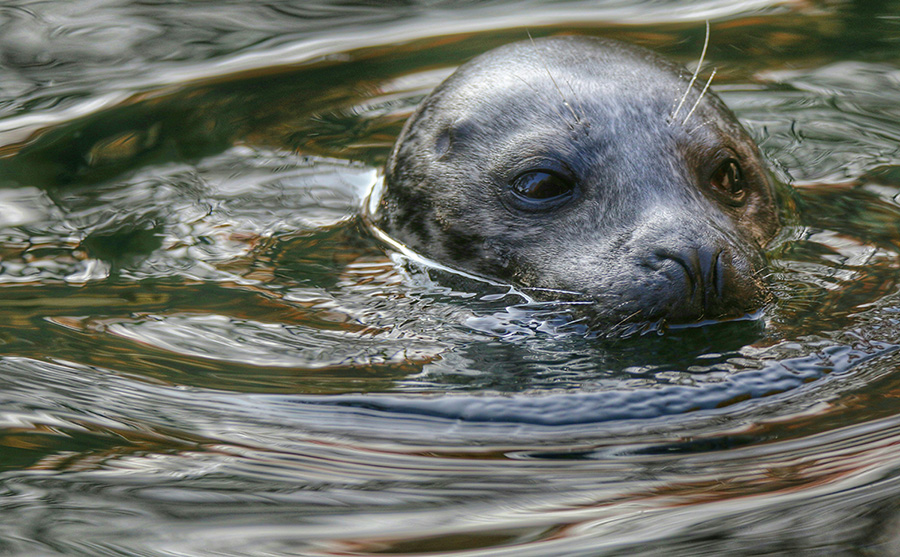For decades, the monk seal (Monachus monachus) has been practically a ghost, the protagonist of a few sightings in the open sea so rare as to deserve official announcements and prominent newspaper headlines.And even today, encounters are so sporadic that they become precious scientific information for the research groups dedicated to its study. In fact, the pinniped, once widespread in Italy and the rest of the Mediterranean basin, has suffered such a drastic demographic decline especially in the last fifty years that it is considered one of the hundred species of mammals at highest risk of extinction on the planet.It was the 70s of the last century when, at the same time as the alarm over the reduction of specimens in all the sites of their previous, stable frequentation, the experts predicted their extinction by the arrival of the new millennium. A prediction fortunately denied by the sightings that occurred after that fateful date and that, over time, although always in very limited numbers, have highlighted a growing trend. It suggests that the marine mammal is in a slow, difficult recovery. Due without any doubt to the protection and conservation measures adopted over time in its favor, but also to the animal's capacity for resilience, to which its notorious distrust of man is not unrelated. Fruit of the hunting of which the seal has been a victim over the centuries for its meat, fur and fat, which was used as oil. It was also considered a dangerous "thief" by fishermen, as it was attributed with destroying nets to catch fish.The only pinniped in the Mediterranean, the monk seal owes both its scientific name and the one by which it is commonly known to the color of its coat, which resembles a monk's habit. In adults, the short fur is darker in the male, with possible streaks and a large light spot on the belly (which in males reaches white), while the young are born black with a white spot near the navel. The cylindrical body, smaller in females, can reach a length of about two and a half meters, for a weight of up to four hundred kilos. The head is round with large eyes and two thick tufts of whiskers on the sides of the upper lip. The animal has two pectoral fins with claws and two hind fins. These are responsible for swimming, while the pectoral fins are used for direction.Among the characteristics of the monk seal is that of being an excellent swimmer, able to spend most of its life in the open sea, to cover considerable distances of a few dozen kilometers every day and to reach significant depths in apnea, perhaps even two hundred meters, although the maximum depth ascertained is 90. Fishing is carried out with frequent and at times continuous dives, emerging just to breathe. Its movement out of the water is much less agile, since it is not able to rise on its hind flippers like other species of seals, but proceeds belly to the ground. Even to sleep, therefore, it remains in the open sea, on the surface or even in submerged ravines from which it comes up to breathe.The nun has a life cycle of between twenty and thirty years and becomes fertile around the age of four, when it mates for the first time. The reproductive season includes summer and autumn and it gives birth to one calf per year, after eleven months of gestation. The calf, about 80 centimetres long and weighing between 16 and 18 kilos, is given birth to in sheltered caves or on stretches of sandy coast near the sea, mainly in the months of September and October. It stays there for the entire nursing period, which lasts between 11 and 17 weeks. The mother stays close to her calf only in the first few weeks of life, then goes away to fish and returns to the calf only to nurse it. Although it enters the water quite early, the calf begins to swim after weaning, around four months of age.For those characteristics, in that phase it is particularly vulnerable and in fact the mortality of the cubs, which is very high, has represented one of the unfavorable elements and reasons for the regression of the species. The young that survive, move away from the group to which they belong and will not rejoin. The males, for their part, are very territorial and fights are quite frequent.The animal, which hunts day and night, feeds on fish, both bony and cartilaginous, crustaceans and cephalopods, in particular octopuses, which are one of its favorite prey.Sightings and conservation
When it was still widespread, the monk seal was present in all the seas around the Peninsula and the islands. The marine animal sacred to Apollo and favored by Poseidon, according to Greek mythology, was at home in various parts of Sardinia, particularly in the Gulf of Orosei, where numerous caves welcomed specimens about to give birth or engaged in raising their young in the first months of life. It was precisely in that area that the last birth in the Italian sea was documented in 1986. Another very popular reproduction area was the Tuscan Archipelago, then some smaller islands of Sicily and, going up the Adriatic, the Tremiti Islands up to Istria, Croatia and Dalmatia. And the first cry of alarm about the future of the seal was launched precisely in Dalmatia, where the first decree for the protection of a species at risk of extinction was issued in 1935.These are roughly the same sites where, in the dark years of drastic population decline, sporadic sightings occurred, which kept alive the hope of the survival of the Mediterranean pinniped. There are now only a few hundred specimens, in small groups found in the eastern Mediterranean between Greece and Turkey up to the Red Sea and, in the western Mediterranean, in the North African sea and along the African coast in the Atlantic.Victim of hunting to which it was subjected, of habitat loss (especially for raising pups) linked to tourism development even in usually wild areas, of accidental captures with fishing nets and of pollution and spread of plastic in the sea, the monk seal has become a protected species, the subject of specific conservation projects and activities.Among these, the actions implemented by the WWF with the Monk Seal Group since 1976, to monitor the presence of the animal in caves and protected places where it used to stop for reproduction or even just passing through before the crisis. Thanks to the commitment of volunteers and experts, it was thus possible to document with cameras the visits, however very rare, of seals in sea caves in various parts of Italy. The study of environmental DNA has also proven invaluable in being able to detect the passage and presence of the animals.Volunteers collect seawater samples, which are filtered with special kits and the University of Milan Bicocca performs the analyses. Thanks to this type of study, areas of presence have been highlighted in Istria and the Venetian lagoon; Salento and the Gulf of Taranto; the smaller Sicilian islands; eastern Sardinia and the Caprera canyon; the Tuscan Archipelago and the Balearics.Both these traces and the more frequent sightings have revealed that the monk seal in recent decades, keeping away from humans, has not disappeared definitively, but has begun to reverse course, also due to the establishment of Marine Protected Areas that safeguard some of its favorite sites. Thus, in 2015 the level of vulnerability of Mediterranean seals, which have been a highly protected animal at a national level since 1992, was officially revised by the International Union for Conservation of Nature IUCN from critically endangered to endangered species.




